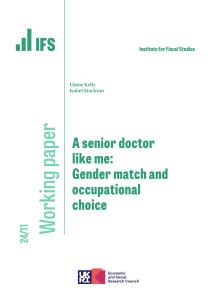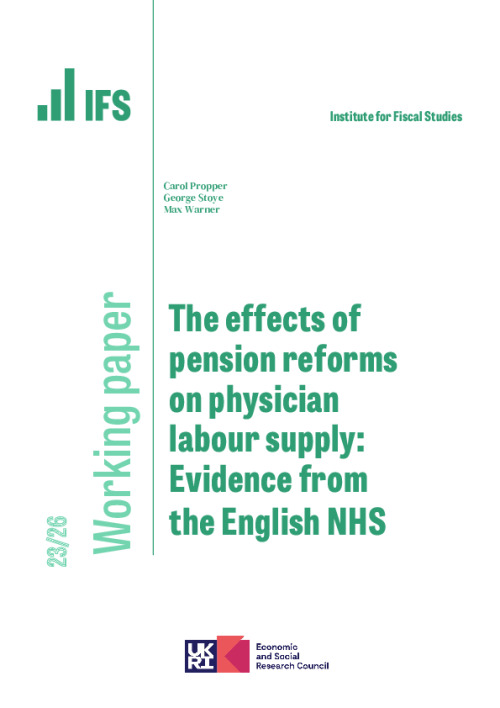Downloads
We examine the labour supply response of senior doctors in England following a reform of the public sector pension system that moved employees from a final salary to a career average pension plan. Exploiting the staggered rollout of the reform across narrowly defined age groups, we find that doctors increased labour supply by just under 4% four years after exposure. This implies a labour supply elasticity with respect to pension wealth of -0.05, and with respect to current returns to work of 0.04. This indicates doctors’ responses were small despite relatively large changes in financial wealth induced by the reforms.
Authors

Research Fellow Imperial College London
Carol is a Research Fellow at the IFS and a Professor of Economics in the Department of Management and Imperial College Business School, London.

Associate Director
I completed a PhD at UCL in 2020. My work examines the drivers of variation in the quantity and quality of healthcare provided to different patients.

Research Economist
Max joined the IFS in 2020 as a research economist in the Healthcare Sector, with a focus on the NHS labour force and adult social care in England.
Working Paper details
- DOI
- 10.1920/wp.ifs.2023.2623
- Publisher
- Institute for Fiscal Studies
Suggested citation
C, Propper and G, Stoye and M, Warner. (2023). The effects of pension reforms on physician labour supply: Evidence from the English NHS. 23/26. London: Institute for Fiscal Studies. Available at: https://ifs.org.uk/publications/effects-pension-reforms-physician-labour-supply-evidence-english-nhs (accessed: 27 April 2024).
More from IFS
Understand this issue

If you can’t see it, you can’t be it: role models influence female junior doctors’ choice of medical specialty
24 April 2024

Spring Budget 2024: What you need to know
7 March 2024

The NHS waiting list: when will it come down?
29 February 2024
Policy analysis

Progression of nurses within the NHS
12 April 2024

Regional variation in earnings and the retention of NHS staff in Agenda for Change bands 1 to 4
10 April 2024

Spring Budget 2024
6 March 2024
Academic research

A senior doctor like me: Gender match and occupational choice
24 April 2024

Labour market inequality and the changing life cycle profile of male and female wages
15 April 2024

Interpreting cohort profiles of lifecycle earnings volatility
15 April 2024
